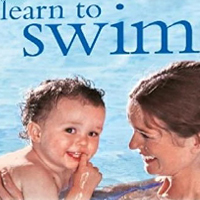Taking the First Steps
 Water makes us very afraid when we know how easily a baby could drown. Today we are going to tell you how to teach your baby to swim from when he is very small. They will start to have confidence in the water and you will feel much more secure and calm.
Water makes us very afraid when we know how easily a baby could drown. Today we are going to tell you how to teach your baby to swim from when he is very small. They will start to have confidence in the water and you will feel much more secure and calm.
The first contact with the water should be in the bath since you can support the baby much better. Put the baby in the bath and fill it with water until it covers the chest. Do this several times. Also, if you use toys in your bathroom it would be advisable to take them to your lessons in the pool too, so that your baby feels secure with familiar things. After, swimming lessons will come in the pool.
It is very important that your baby feels relaxed in the water and learns to float, but that does not mean that he is out of danger of drowning. You must always be with your child and either hold him or keep him at arm’s length at all times. Never leave it alone near a swimming pool or even a smaller body of water, like a bucket with three fingers of water, not even forfor such small babies.
 Forget the floats. If you bought them to make them feel safer in the water, the experts do not recommend them. Not only can it give them a false sense of security, but they will also adopt an incorrect way of staying afloat, as it makes them take a vertical position in the water when they need to be able to stand horizontally. If you are already used to swimming with them, it will be difficult to take them off. If you want your child to learn to swim more easily, try these water games:
Forget the floats. If you bought them to make them feel safer in the water, the experts do not recommend them. Not only can it give them a false sense of security, but they will also adopt an incorrect way of staying afloat, as it makes them take a vertical position in the water when they need to be able to stand horizontally. If you are already used to swimming with them, it will be difficult to take them off. If you want your child to learn to swim more easily, try these water games:
- Give your baby a straw and encourage him to blow into the water.
- Drag him holding his arms while he kicks with his feet.
- Put him to float on his back, supporting his head and back. Move in zig-zag.
- Teach him to jump from the edge, holding him first from below with his hands. Then encourage him to jump without help, but stand up, not head down.
After 15 months, although it also depends as soon as the child begins to become familiar with the water, their learning is a little faster, because they already know how to walk and this makes them move better. Babies who have contact with water will begin to crawl , walk, move, communicate with other children much quicker.
Finally, it is important, to teach certain basic rules about swimming from a very early age, which will provide some extra safety measures to enjoy the lessons safely:
- Do not get into the water without first tellng an adult
- Do not jump in without permission or supervision of an adult
- Shower before and after the pool
- Use other protection methods such as sunscreen, flip flops to avoid fungus in swimming pools or goggles to protect the eyes from chlorine or salt
- Do not run or play on the curb of the pool